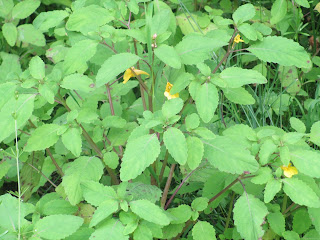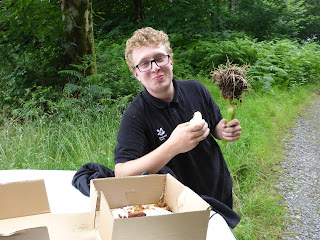The Langdale team have been busy removing the invasive Himalayan Balsam between Elterwater village and Rob Rash woodland.
Without intervention this fast growing annual (grows, sets seed and dies in the same year) with pink pea-like flowers, can cover vast areas of land.
Above is an image of the scarce native Touch-me -not balsam growing in Rob Rash woodland, an important site for this plant; this species is at great risk of being over-run and displaced by invasive Himalayan balsam if left unchecked. .
We try and pull all the Himalayan Balsam plants as one left can produce thousands of seeds. There is around a 3-week period between a flower developing and the seed being viable so by the time we see the pink through the trees, we act fast.
Due to its location, Elterwater picks up a wide variety of seed washing from the Langdale valley.
We had to fight our way through a bamboo jungle to find some of the Himalayan Balsam.
Himalayan Balsam is especially common on river banks, shading out all other species and becoming a monoculture. When it dies back over the winter it leaves the river banks bare with no roots holding the soil back, leading to erosion and siltation.
In wet areas they can grow extremely tall – they are hollow stemmed and so full of water some of them we could tip upside-down and pour it out! Here Gareth, head chef at Sticklebarn pub meets his match.
In this situation Wellies are preferred….
It is all worth it for this stunning view looking at Elterwater towards Skelwith bridge.
And definitely worth it for a bit of free cake. Liam (also from Sticklebarn pub) digging in and showcasing one of the larger finds of the day!











No comments :
Post a Comment